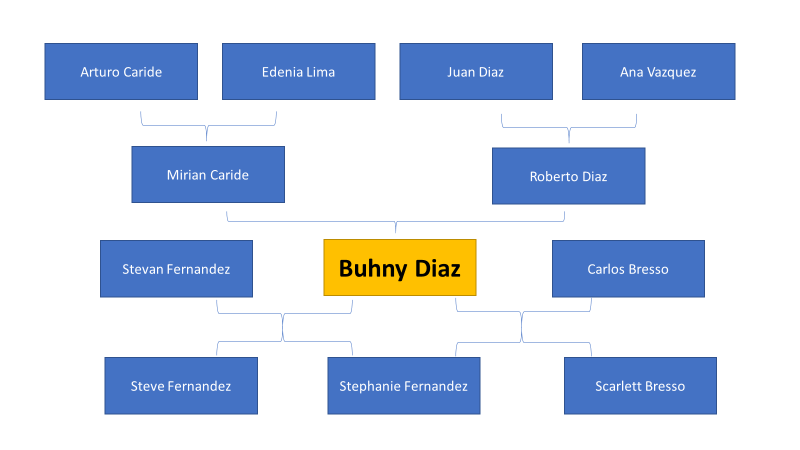
Interview Answers
- Ethnic background: Cuban; country of origin: Cuba; religion: Catholicism; the number of generations in the U.S.: 1.
- Alternative medicine in Cuba is an essential cultural and traditional practice, and thus, I always adhere to medicinal plant species in order to treat any form of illness. I maintain my and my family’s health by using Cuban herbs, and my mother used to do the same.
- I primarily use leaves of the plant called Aloe Vera to protect the health, and my mother used to combine Aloe with Tilo herb in order to boost the effect. It is mostly utilized for its anti-inflammatory, analgesic, and homeostatic properties.
- In order to restore health, I used roots, flowers, and leaves of the Cuban Romerillo herb, because it accelerates the healing process, especially during the infections, such as flu or cold. My mother also used the given plant to restore health and remove tooth pain.
- Due to my Catholic background, I believe that the birth of a child is a wonderful event and the soul is mostly clean, except for the “original sin.” Therefore, it is important to cleanse the baby through the ritual of baptism.
- As a Catholic individual, any form of illness is a trial from the Lord, who wants to test the soul and give a chance to adhere to the teachings of Christ. I am not aware of religion-based rituals, but I use my herbs to facilitate the healing process.
- I think that the healing process is a gift from the Lord, but He acts through someone or something, and that is why I accompany the event with my Cuban medicinal plants.
- Death is God’s plan, and we are all destined to join Him in an eternal afterlife, and in the case of rituals, we perform traditional Catholic funeral practices.
Evidence-Based Research
The selected home remedy is a jar of Cuban medicinal plants, which are essential for the family’s healing and health restoration practices. It is important to note that there is no particular artifact or remedy that reflects the interviewee’s spiritual or religious beliefs defining birth, illness, healing, marriage, and death or burial rituals. The latter cannot be analyzed on its healing properties, because the underlying benefits are metaphysical and spiritual. Therefore, this evidence-based research will primarily focus on the Cuban medicinal plants used in the family health restoration practices, which is Aloe Vera. The study suggests that the Cuban Aloe plant contains components that facilitate the anti-inflammatory process and accelerate the healing of severe burns in rat lab animals (Farzadinia et al., 2016). Another study also supports the fact that Aloe-derived extracts induce antioxidant protection without catalyzing the inflammation process, which means that there are no side effects during health restoration (Benson et al., 2015). Therefore, the research strongly suggests that there is evidence regarding the healing properties of the herb.
Moreover, one should be aware that Aloe Vera and other Cuban medicinal plants play a central role in the traditional medicine of the ethnic group. The herb has a rich biochemical composition because, in its leaves, Aloe Vera contains vitamins, minerals, amino acids, and other beneficial substances, which are sometimes called plant enzymes (Duarte & Rai, 2016). This plant has a bactericidal, antiviral, antifungal effect, and is a natural antibiotic. Aloe Vera supports the body’s homeostasis, increases enzymatic activity, and improves digestion. In addition, it is important to note that it enhances the body’s natural defenses and has anti-inflammatory and anti-allergic effects. Aloe Vera also has detoxifying properties and has an alkalizing impact on the internal environment of the body, preventing the shift to the acidic side, which can be caused by digestive disorders (Duarte & Rai, 2016). This plant can therefore have a regulating effect on intestinal motility.
Traditional Cuban healers have come up with many recipes for using aloe to combat various ailments. For example, according to my mother, when people have a runny nose, the treatment is simple. She recommends cutting off a leaf or part of a leaf at the bottom of the plant, squeezing the juice out of it, and placing two or three drops in a glass of water. The recommended course of treatment for a cold, according to the interviewee, is no more than a week. Cuban healers believe that the greatest healing effect appears in the agave after the fourth year of cultivation; therefore, the lower leaves that formed on the plant were cut off.
The throat diseases are common in people, and according to the mother, aloe juice will also help with the given. It is squeezed out of cut leaves and mixed in equal proportions with boiled water, and then gargled with this mixture. After this procedure, it is recommended to drink a spoonful of fresh aloe juice with a glass of warm boiled milk. Given the biological activity of aloe, the course of treatment should not be delayed either. An aqueous infusion of the leaves is used to rinse the mouth for gum disease. In order to obtain it, the cut aloe leaves are washed and crushed to a mushy state. Therefore, the herb is a centerpiece of the Cuban home remedies for healing and health restoration. The main reason is that the plant is highly available in Cuba, and its medicinal properties are supported by evidence.
References
Benson, K. F., Newman, R. A., & Jensen, G. S. (2015). Antioxidant, anti-inflammatory, anti-apoptotic, and skin regenerative properties of an Aloe vera-based extract of Nerium oleander leaves (nae-8(®)). Clinical, Cosmetic and Investigational Dermatology, 8, 239-248.
Duarte, M. C. T., & Rai, M. (2016). Therapeutic medicinal plants: From lab to the market. CRC Press.
Farzadinia, P., Jofreh, N., Khatamsaz, S., Movahed, A., Akbarzadeh, S., Mohammadi, M., & Bargahi, A. (2016). Anti-inflammatory and wound healing activities of aloe vera, honey and milk ointment on second-degree burns in rats. The International Journal of Lower Extremity Wounds, 15(3), 241-247.